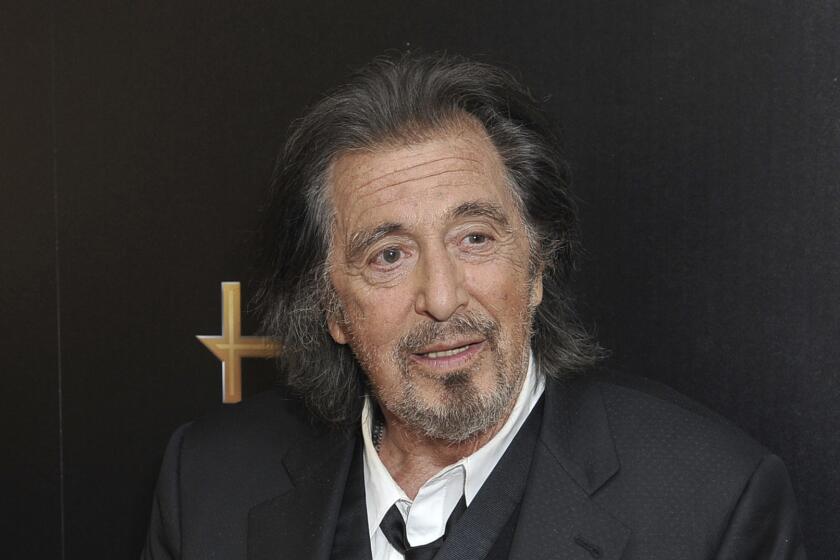The anger of adolescence
It’s impossible to read “Fight Scenes,” Greg Bottoms’ collection of affecting autobiographical vignettes, without thinking about Denis Johnson’s “Jesus’ Son.”
Both books are deceptively simple, composed of short, connected pieces as seemingly off-the-cuff as journal entries, little windows into the degraded life. Both are direct, even brutal, portraying an aimless existence in which transcendence, if available at all, is fleeting, found in random acts of violence or drugs.
Both feature unnamed narrators -- Johnson’s is a wasted drifter not quite able to get it together, Bottoms’ is a 12-year-old cut loose in the working-class suburbs of Newport News, Va. -- neither of whom is able to decode the blankness he finds.
In fact, it’s no real stretch to imagine a correlation between them, as if the character in “Jesus’ Son” was the man whom Bottoms’ adolescent desperately wants not to become.
Such desperation is no abstraction, for though “Fight Scenes” is set mostly in the summer of 1983, Bottoms pulls back repeatedly, allowing his narrator to speak to us from the present, offering his insights as an adult.
“Much of my life has been a daydream,” he writes in a passage that becomes a motif, “a here-but-not-here experience. In 1983, as I’m remembering and re-creating it, these daydreams could roll over me like a tide.”
Unlike “Jesus’ Son,” however, the connective fiber here is not drugs (although there are plenty of drugs in the book); it’s anger. Every one of “Fight Scenes’ ” 17 brief chapters is keyed by some sort of conflict, physical or emotional.
The book opens with an account of a bulldog so enraged that she has nearly strangled herself on her leash. That’s a stunning metaphor, not just for the uneasy quality of menace that seeps through the pores of Bottoms’ writing but also for his stunning sense of futility.
To some extent, this futility is the futility of every 12-year-old, suspended between childhood and adulthood, yearning for independence and yet utterly at the mercy of the larger world. In “Fight Scenes,” that is magnified by the dead-end landscape, as the narrator and his best friend, Mark, hang around, trespassing on construction sites, smoking Mark’s dad’s dope, bird-dogging junior high school girls.
“She had small pimples, blackheads, around her mouth,” Bottoms writes of one such girl, Hazel, who will “do stuff,” or so the story goes. “Her breath smelled faintly of Italian salad dressing. I’d never been so close to such beauty, such raw, messy beauty.”
Here, we see the complexity of early adolescence, the push-and-pull between attraction and repulsion, desire and despair. This is also true of Hazel, who rakes the narrator with her fingernails (“You think you can come over here and be with me!” she shouts) before inviting him to kiss.
The power of the scene resides in Bottoms’ ability to make us empathize -- with Hazel, with the narrator, with the bleak circumstance in which they find themselves. That the characters are too inexperienced to recognize the depth of their own loneliness and longing makes those feelings only more profound.
Nowhere is this more vividly portrayed than in the narrator’s relationship with Mark, who, even at 12, is on the verge of sliding off the edge. Mark lives with his father, Bill, a good-time guy who works construction, but if they share a loose kind of relationship, the boy is neglected in almost every way that counts.
“Bill didn’t seem concerned by anything at all. He let Mark do whatever he wanted . . . ,” Bottoms writes. “A few of the men from his crew were often over at their house after work, drinking beer and smoking dope. . . . After drinking for a couple of hours, Bill and the men . . . went out to bars and strip clubs in Newport News. Mark and I then had the house to ourselves.”
What Bottoms is describing is a terrible freedom -- not the freedom to do anything but rather to do nothing at all. Such a freedom preys on Mark, provoking him to self-annihilation. In one scene, he breaks into his mother’s house and defaces a photo of himself, writing across it:
I LOVE YOU BUT YOU DON’T LOVE ME
YOU LOVE ME BUT I DON’T LOVE YOU
I LOVE ME BUT YOU LOVE YOU
YOU LOVE YOU BUT I LOVE ME
Later, he picks a fight with an older kid, showing up for the confrontation with nude Polaroids of one of his father’s girlfriends duct-taped to his chest.
“He often lied, for no good reason,” Bottoms says of Mark. “By the time he moved away at sixteen, we didn’t hang out anymore because he’d told so many lies I couldn’t decipher who he was. He had black circles under his eyes from all the drugs, drinking. He looked twenty, twenty-three, twenty-five, with a wet eyebrow of a mustache over his lip, constellations of acne on his forehead and chin.”
For the narrator, Mark represents an alternative set of possibilities, a different way he could have gone. That we know he didn’t only makes the risk more real.
This is the key to “Fight Scenes,” the way Bottoms’ decision to move back and forth between the child and adult perspective invests the book not with distance but with an unbearable intimacy. Everything matters, is what he means to tell us, and yet we can never understand what it all means.
Or, as Bottoms puts it: “Facts, facts, facts and no sense to be found. I felt my insignificance like a breeze.”
--
David L. Ulin is book editor of The Times.
More to Read
Sign up for our Book Club newsletter
Get the latest news, events and more from the Los Angeles Times Book Club, and help us get L.A. reading and talking.
You may occasionally receive promotional content from the Los Angeles Times.








